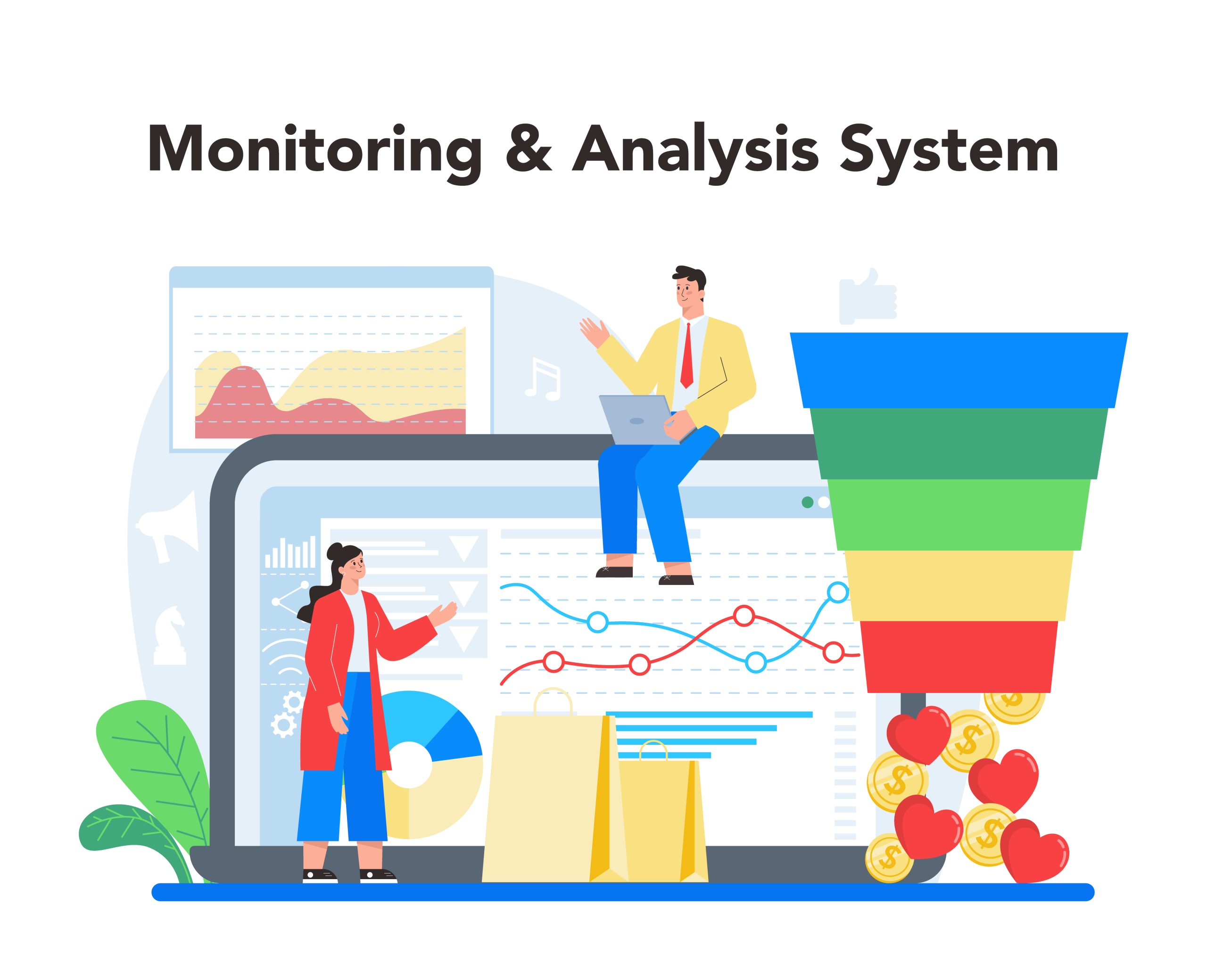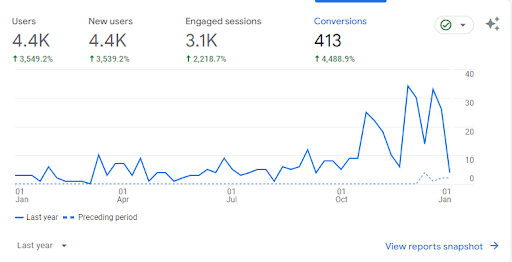
In today’s competitive business landscape, increasing revenue is a top priority for every company. But how can you unlock the key to success and skyrocket your earnings? The answer lies in conversion rate optimization (CRO). By fine-tuning your website, optimizing landing pages, and strategically guiding visitors towards desired actions, CRO can have a transformative impact on your bottom line.
CRO is not just about driving traffic to your site; it’s about converting that traffic into paying customers. It involves analyzing user behavior, conducting A/B tests, and implementing data-driven strategies to improve the conversion rate at every stage of the customer journey.
In this article, we will explore the power of CRO and how it can drive revenue growth for your business. From crafting compelling call-to-actions to streamlining the checkout process, we will delve into actionable tips and techniques that can lead to substantial increases in conversions.
Don’t let potential customers slip through the cracks. Embrace conversion rate optimization and discover the untapped potential that can propel your business to new heights of success. Let’s unlock the door to increased revenue together.
What is Conversion Rate Optimization?
Conversion rate optimization is the process of improving your website or landing page to increase the percentage of visitors who take a desired action. This could be making a purchase, subscribing to a newsletter, or filling out a contact form. CRO involves analyzing user behavior, conducting A/B tests, and implementing data-driven strategies to improve the conversion rate at every stage of the customer journey.

Why is Conversion Rate Optimization Important for Businesses?
CRO is not just about driving traffic to your site; it’s about converting that traffic into paying customers. It’s a cost-effective way to maximize your marketing efforts and get the most out of your existing traffic. By optimizing your conversion rate, you can increase your revenue without spending more on advertising.
In addition to boosting revenue, CRO can also enhance the overall user experience and customer satisfaction. By understanding your audience’s needs and preferences, you can create a seamless and personalized journey that encourages visitors to take action. This builds trust and loyalty, leading to repeat business and positive word-of-mouth recommendations.
Understanding the Customer Journey and Conversion Funnel
To effectively optimize your conversion rate, it’s crucial to understand the customer journey and conversion funnel. The customer journey refers to the path a visitor takes from the moment they land on your website to the point of conversion. The conversion funnel represents the stages a visitor goes through, starting from awareness, moving to consideration, and finally, reaching the decision to convert.
By mapping out the customer journey and identifying potential roadblocks or drop-off points, you can optimize each stage to increase the likelihood of conversion. This may involve improving the clarity of your value proposition, simplifying the navigation, or reducing friction in the checkout process.

Key Metrics for Measuring Conversion Rate Optimization Success
To gauge the effectiveness of your CRO efforts, it’s important to track and analyze key metrics. These metrics provide valuable insights into how well your website or landing page is performing and where improvements can be made.
Some essential metrics to consider include conversion rate, bounce rate, average time on page, and exit rate. Conversion rate measures the percentage of visitors who complete a desired action, while bounce rate indicates the percentage of visitors who leave your site after viewing only one page. Average time on page shows how long visitors spend engaging with your content, and exit rate identifies the percentage of visitors who leave your site from a specific page.
Steps to Conduct a Conversion Rate Optimization Audit
Before implementing any changes, conducting a CRO audit is a crucial step to identify areas of improvement. The audit involves analyzing your website or landing page for usability, design, and overall user experience. By following these steps, you can uncover hidden opportunities to enhance conversion rates:
1. Analyze user behavior: Use web analytics tools to gather data on user interactions, such as heatmaps, click maps, and scroll depth. This will help you understand how visitors engage with your site and identify potential areas for optimization.
2. Conduct a website performance assessment: Evaluate the speed, responsiveness, and mobile-friendliness of your site. Slow-loading pages or poor mobile experiences can significantly impact conversion rates.
3. Review your landing pages: Assess the clarity of your messaging, the visibility of call-to-actions, and the overall design of your landing pages. Make sure they align with the needs and expectations of your target audience.
4. Identify conversion barriers: Look for any obstacles that may prevent visitors from converting, such as complex forms, unclear instructions, or excessive steps in the checkout process. Streamline these processes to reduce friction and increase conversions.
5. Analyze your competitors: Study what your competitors are doing well and identify areas where you can differentiate yourself. This will help you craft a unique value proposition and optimize your conversion rate.
Strategies for Improving Website Usability and User Experience
A crucial aspect of CRO is optimizing your website for usability and providing an exceptional user experience. Here are some strategies you can implement to enhance user engagement and drive conversions:
1. Simplify navigation: Ensure your website’s navigation is intuitive and easy to follow. Use clear labels, logical hierarchies, and prominent calls-to-action to guide visitors through your site.
2. Optimize page load speed: Minimize unnecessary elements, compress images, and leverage caching to improve your website’s load time. A faster site not only improves user experience but also reduces bounce rates.
3. Enhance mobile experience: With an increasing number of users accessing websites via mobile devices, it’s crucial to optimize your site for mobile responsiveness. Ensure your content is legible, buttons are easy to tap, and forms are user-friendly on smaller screens.
4. Improve readability: Use clear and concise language, break up content into digestible sections, and incorporate headings and bullet points to enhance readability. Make sure your website is accessible to all visitors, including those with visual impairments.
5. Leverage visual elements: Incorporate high-quality images, videos, and infographics to engage visitors and convey your brand message effectively. Visual content can help strengthen emotional connections and drive conversions.

Optimizing Landing Pages for Higher Conversion Rates
Landing pages play a crucial role in CRO, as they are specifically designed to capture leads or drive conversions. Here are some best practices to optimize your landing pages for higher conversion rates:
1. Craft compelling headlines: Grab visitors’ attention with clear, persuasive headlines that communicate the value of your offering. Use strong action words and focus on the benefits your product or service provides.
2. Create a strong value proposition: Clearly communicate the unique value your product or service offers and how it addresses your customers’ pain points. Highlight any competitive advantages or key features that set you apart from your competitors.
3. Use persuasive copywriting: Write persuasive and benefit-driven copy that speaks directly to your target audience. Focus on the benefits your product or service provides rather than just listing features.
4. Design attention-grabbing call-to-actions (CTAs): Use contrasting colors, clear wording, and strategic placement to make your CTAs stand out. Clearly communicate the desired action and create a sense of urgency to encourage conversions.
5. Implement trust signals: Build credibility and trust by incorporating testimonials, reviews, certifications, and security badges. This reassures visitors that their personal information is safe and that your product or service is reputable.
The Role of Persuasive Copywriting in Conversion Rate Optimization
As the saying goes, “Content is king.” When it comes to conversion rate optimization (CRO), persuasive copywriting plays a crucial role in attracting and engaging visitors, ultimately leading to higher conversion rates. In this section, we will explore how persuasive copywriting can influence user behavior and drive revenue growth for your business.
The Role of A/B Testing and Experimentation
A/B testing is a powerful technique in CRO that involves comparing two versions of a webpage or element to determine which one performs better in terms of conversions. By testing different variations and analyzing the results, you can make data-driven decisions to optimize your website and drive higher conversion rates.
When conducting A/B tests, it’s important to focus on one element at a time, such as headlines, CTAs, or form fields. This allows you to isolate the impact of each change and measure its effectiveness accurately. Continuously test and refine your website to improve conversion rates over time.
Case Studies of Successful Conversion Rate Optimization Campaigns
To illustrate the impact of CRO, let’s explore some real-life case studies of successful campaigns:
1. Company X increased their conversion rate by 20% by simplifying their checkout process and reducing the number of steps required to complete a purchase. By streamlining the user experience, they saw a significant increase in completed transactions.
2. E-commerce store Y improved their conversion rate by 15% by implementing persuasive copywriting techniques and creating urgency through limited-time offers. By effectively communicating the value and benefits of their products, they successfully increased their sales.
3. Website Z increased their conversion rate by 30% by optimizing their landing page design, incorporating high-quality visuals, and creating a clear and compelling call-to-action. By focusing on improving the overall user experience, they saw a substantial increase in lead generation.
McKay Law Tx digital marketing results Last 12 months (March 1, 2023 to March 1, 2024)
- Website users up 6%
- Conversions up 27,733%


McKay Law TX digital marketing results January 1, 2024 through March 1, 2024
- Website users up 46%
- Conversions up 57%



Michael Piri Law Firm digital marketing results 2023
- Website users up 3,549%
- Conversions up 4,489%


Michael Piri Law Firm digital marketing results January 1, 2024 through March 1, 2024
- Website users up 76%
- Conversions up 85%



Dr. Larry Wolford digital marketing results Last 12 months (March 1, 2023 to March 1, 2024)
- Website users up 28%
- Conversions up 9,110%


In conclusion, conversion rate optimization is a powerful tool that can skyrocket revenue for your business. By understanding the customer journey, analyzing key metrics, conducting audits, and implementing data-driven strategies, you can optimize your website and landing pages to drive higher conversion rates. From improving usability and user experience to crafting persuasive copywriting and leveraging A/B testing, every aspect of CRO plays a vital role in unlocking the door to increased revenue. Don’t let potential customers slip through the cracks—embrace conversion rate optimization and discover the untapped potential that can propel your business to new heights of success. Let’s unlock the door to increased revenue together.




